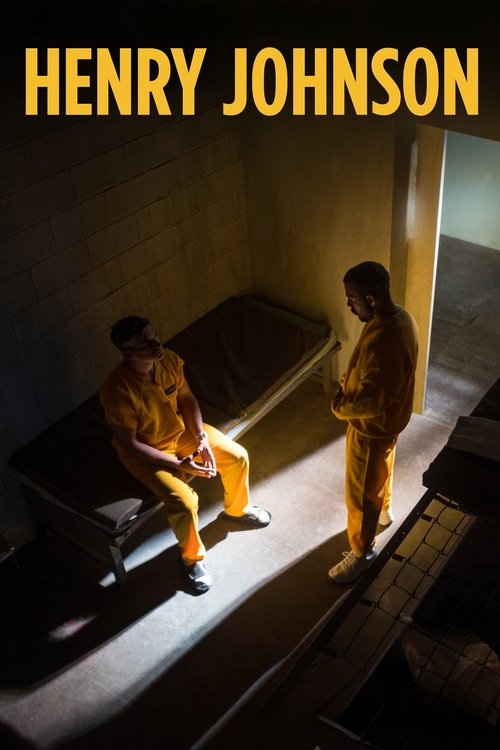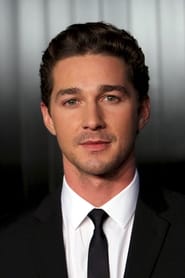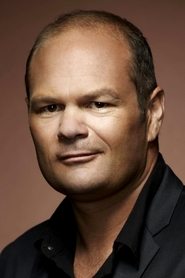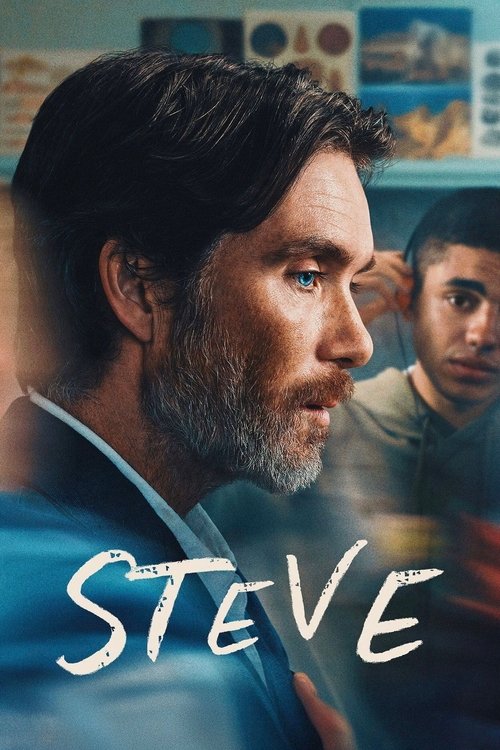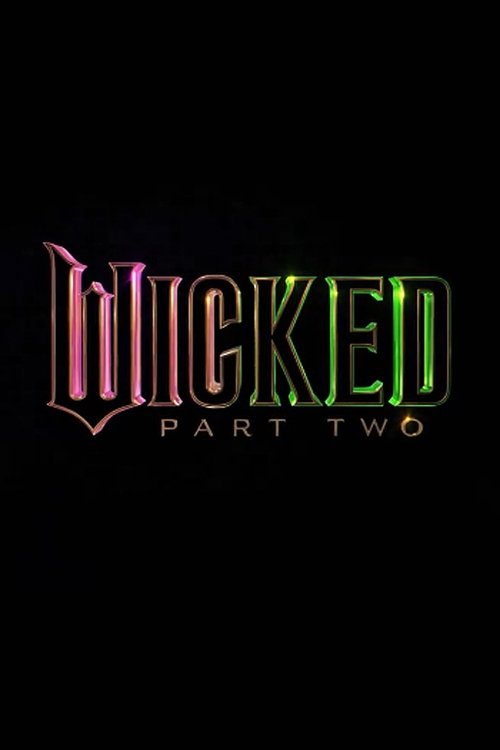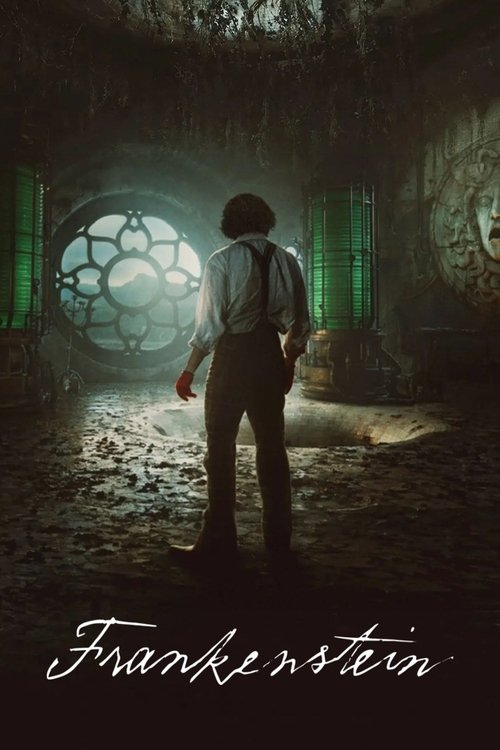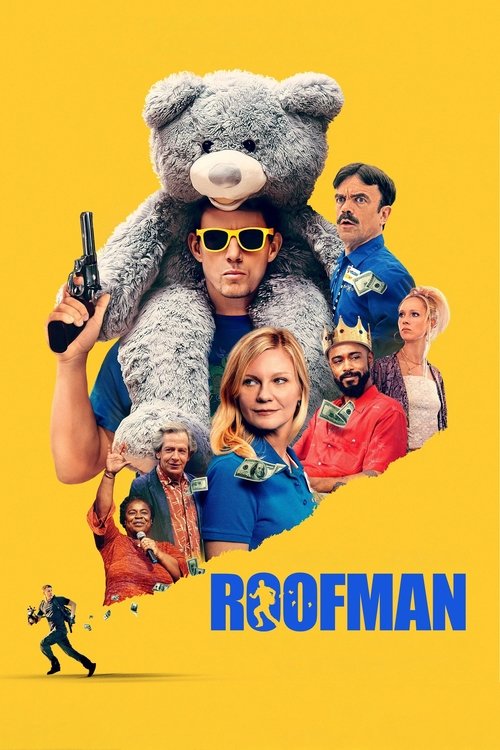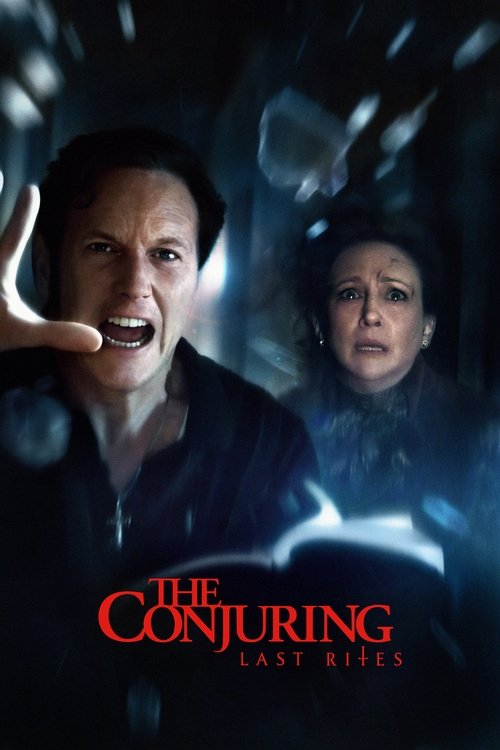
Ask Your Own Question
What is the plot?
The film opens on Henry Johnson, a man who keeps himself deliberately small and quiet. He moves through an institution whose surfaces are spare and functional; walls are bare, lighting is cool and unadorned, and rooms feel measured and staged. Henry's face is contained; his gestures are economical. He speaks when he must, and he occupies the periphery of the building's routines. Credit rolls give way to a first scene in which Henry's ordinariness is established through the way others overlook him and through his reluctance to draw attention. He exists, for now, as a figure of habit inside this austere place.
Gene enters the film as a force of contrast. He arrives with a charisma that presses outward, a presence that claims the room. Gene's manner is direct and often uncompromising; he moves quickly between familiarity and challenge, measuring Henry with a look that reads like an appraisal. When the two first cross paths, Gene's interest in Henry reads as professional concern on its surface: he offers instruction, a practical suggestion, a piece of advice. He takes on the guise of mentor. Henry accepts, at least at first, because the guidance is clear and the direction reassuring. He allows Gene to set the pace. The institutional routine provides the setting for these early exchanges: meetings in narrow offices, supervised interactions in plain rooms, and brief, intense conversations in corridors stripped of ornamentation. Dialogue drives the material; each line pushes them further along an arc of influence.
As their interactions progress, the relationship shifts. Gene tightens his attention around Henry. His mentorship becomes more insistent and more personal. He begins to move from offering concrete instruction to probing Henry's choices, asking questions that pry at the boundaries of Henry's private life. Henry answers, sometimes with guarded honesty, sometimes with evasions that reveal his discomfort. Gene encourages Henry to test limits: to volunteer for tasks that place Henry at the center of scrutiny, to engage more directly with the institution's protocols, to make decisions he would have previously avoided. Henry responds by stepping forward, adopting small acts of compliance that feel like proof of trust. The tenor of the exchanges changes from didactic to directive; Gene's guidance takes on the texture of command.
What was initially framed as tutelage becomes, over time, a pattern of psychological tightening. Gene pressures Henry into positions where reliance on Gene seems necessary. He orchestrates situations that allow him to intervene, to rescue, and then to reassert control. Henry experiences this as both relief and disquiet. He defers to Gene in moments that require a decision, and he seeks Gene's counsel when he feels unsure. When Henry follows Gene's recommendations, Gene rewards him not with gentleness but with renewed attention, making it clear that compliance keeps the arrangement intact. When Henry resists, Gene's demeanor shifts; he becomes calculating, almost surgical, in exposing Henry's uncertainty. This calibration produces a dynamic in which Henry's choices increasingly orbit around Gene's responses.
Gene's motives remain difficult to pin down. He offers support, but also tests Henry in ways that suggest latent objectives. He engineers conversations that force Henry to declare loyalties, to recount past behaviors, and to adopt stances on matters Henry had previously regarded as private. At times Gene speaks as if drawing Henry into a larger project, referring to standards and expectations inside the institution; at other moments, his comments are bluntly personal, directed toward Henry's character rather than any formal role. Those fluctuations of intent keep Henry off-balance. Henry seeks clarity and finds ambiguity. He asks questions about what Gene expects and receives replies that mix pragmatic instruction with elliptical remarks about strength and necessity. In those exchanges the power imbalance becomes more visible: Gene authorizes and withholds; Henry seeks and receives; the relationship grows asymmetrical.
Throughout, the film keeps its staging economical. Scenes take place in a handful of rooms: an interrogation-style office; a communal area where individuals meet under supervision; narrow hallways where conversations are suddenly intimate because there are no other distractions. The camera lingers on faces and on the small gestures that mark a shift in control--an extended silence, a hand held for a beat too long, a refusal to meet an eye. The dialogue carries the forward motion. Nothing in the mise-en-scène intrudes; the emphasis remains on the verbal and the psychological exchange. The theatrical roots of the material are evident in the way conversations are composed and in the way space is used as a stage for confrontation. The film stages these moments as extended scenes of interrogation and counseled confession.
As Gene's interventions deepen, Henry's identity becomes a contested site. He begins to question his own intentions and to doubt the reliability of his responses. When Gene praises Henry's compliance, the praise feels conditional; it signals an expectation that the next test will require further concession. Henry tries to locate his own boundaries--where he ends and Gene's expectations begin--but every clear boundary Gene offers dissolves into another request or demand. Henry experiences loyalty as a practical necessity in some scenes: following Gene's lead protects him from exposure or rebuke inside the institution. In others, loyalty feels coerced, a forced alignment designed to prevent reprisal. Henry's internal calculations appear in gestures--he nods at instructions, he hesitates before answering, his face shifts as he realizes the stakes of each decision.
The film stages specific confrontations that mark moments of escalation. In one extended exchange, Gene pushes Henry to recount a previous failure; Gene frames the recounting as a test of accountability, and he presses until Henry admits to that failure aloud. The admission functions as a soft erosion of Henry's autonomy: by speaking the failure, Henry places it under Gene's control. In another scene, Gene arranges for Henry to take a visible role in a protocol, and when Henry executes the role imperfectly, Gene's reaction is swift and exacting--he corrects Henry publicly, then privately calls him in for a pointed conversation that leaves Henry unsure whether he has been chastised or coached. Each of these episodes functions as a small battle over decision-making; each reorders the power dynamic further toward Gene.
Henry's response to this pressure is not linear. He alternates between resistance and accommodation. He withdraws at moments, returning to the quiet, unobtrusive behavior that marked his opening. He also pushes back in other moments, asking direct questions about Gene's motives and asserting his need for clear directive. Those assertions produce a flicker of autonomy: Henry articulates a boundary, attempts to act on it, and then encounters either an accommodation from Gene or a retort that undermines the attempt. The pattern is iterative: Henry reclaims his voice, Gene calibrates his influence, and the relationship settles into a pendulum of small advances and sudden retreats.
At the story's midpoint, their relationship reaches a new pitch. Gene amplifies his demands, asking Henry to take part in exchanges that require not only compliance but also enactment of a particular persona. Henry finds himself performing for Gene's approval--modulating his voice, adopting an air of assurance that feels borrowed. The performance elicits praise, but it also binds Henry more tightly to Gene's vision of him. When Henry attempts to stop performing, Gene's reaction is not violent but surgical: he isolates the behavior, names it as a deficit, and arranges a rehearsal of sorts. The rehearsal becomes a ritual that both trains and marks Henry; after repeated rehearsals, Henry's sense of who he is begins to shift, dimension by dimension, until even his private desires are colored by the need to remain in Gene's good graces.
Throughout these exchanges other figures in the institution move around them--staff members, other residents or participants--yet the film remains focused on Henry and Gene. Those ancillary characters occasionally provide context, referring to rules or to the institution's procedures, but they do not break the central dyad's escalating intensity. When institutional oversight appears, it functions as background pressure: protocols exist, but enforcement is filtered through Gene's interpretations, which he delivers to Henry as both command and counsel. Gene is, in effect, the gatekeeper between Henry and the institution's authority. He frames compliance as the path to acceptance, and discretion as the proof of maturity.
As the film proceeds toward its final acts, moments of ambiguity accumulate into a denser pattern of psychological entrapment. Gene's motives remain inscrutable; Henry recognizes that he has been drawn into a web of favors and expectations that are difficult to disentangle. He tries to reclaim agency by making a decisive move--a refusal, an admission, a demand for clarity--but each attempt meets with a calibrated response that preserves Gene's advantage. The film stages these attempts as close, intense scenes: a late-night conversation in a sparsely furnished office, an exchange in a corridor interrupted by a supervisor's approach, a confrontation in a communal area where the other occupants watch without intervening. In each case Henry makes a clear gesture toward autonomy; in each case Gene reframes the gesture as evidence of Henry's growth or as proof of his continued need for guidance.
The climax of the narrative is not an action sequence but a final set piece of conversation. The two men sit across from one another in the institutional room that has hosted so many of their exchanges. Gene speaks in a low, exacting voice; he asks Henry to declare himself, to choose a place within the institution's order. Henry answers, and his answer is hesitant, layered with the traces of past compliance and the flicker of a new assertion. The dialogue tightens until there is a point at which Henry must either submit to Gene's framing of the choice or state a position that challenges Gene's control. The camera holds on their faces; the editing slows; the room's spare geometry frames them like actors on stage. In that scene Henry articulates his sense of self in a way that carries the weight of the preceding interactions. He also registers what has been taken from him in the exchanges with Gene--partly by his tone, partly by the silence that follows his statement.
The film's final sequence dissolves around that conversation. There is no extended denouement; rather, a compressed coda follows in which Henry moves again through the institution's corridors and rooms, now marked by the knowledge that his identity has shifted. His gestures are familiar and yet newly complicated. The camera watches him walk past the same plain doors from the opening, but his posture is altered. Gene is present in the room where the final conversation occurred; he watches Henry leave, not with triumph but with a steady consideration that resists easy interpretation. The last moments fix on Henry as he pauses in an otherwise empty hallway, taking a breath and then continuing his walk. The film ends on that forward motion; it closes on the unadorned architecture that has contained the interactions and on Henry's continued presence within it.
No on-screen deaths occur during the events depicted. The conflicts remain psychological and interpersonal rather than physical. Major confrontations play out through exchanges of speech and through the rearrangement of roles inside the institution. All significant changes in the characters' circumstances occur through decision-making, redefined loyalties, and the shifting balance of influence between Gene and Henry. By the final scene the power relation is altered but not conclusively resolved; Henry departs the last room walking under the same institutional lighting, carrying the compounded effects of what he has been asked to perform and what he has chosen to accept. The closing images are spare: a man in a corridor, the institution's geometry, and the sense that a relationship defined by both assistance and manipulation continues to reverberate in the routines of their daily life. The film ends with the two principal figures occupying the same structure--Gene in the room that contains his control, Henry moving through the halls that must now include his recalibrated self.
What is the ending?
The ending of Henry Johnson (2025) concludes with a tense standoff in prison where Henry, overwhelmed by manipulation and his own indecision, holds a prison guard named Jerry at gunpoint. The film closes on this moment of confrontation, leaving Henry's fate ambiguous but highlighting his continued struggle with agency and control.
Expanding on the ending scene by scene:
The final act of the film takes place inside the prison, where Henry Johnson, having been psychologically shaped and manipulated by his cellmate Gene, faces a critical moment. After absorbing Gene's lessons on fear, power, and survival, Henry reaches a breaking point. The scene opens with Henry confronting Jerry, a prison guard portrayed by Dominic Hoffman. The atmosphere is charged with tension as Henry, armed and visibly distressed, holds Jerry at gunpoint.
Throughout this confrontation, Henry engages Jerry in a dialogue that reveals his internal conflict and confusion. Jerry attempts to counsel Henry, offering advice and trying to de-escalate the situation. Henry's responses are marked by a sense of resignation and detachment, exemplified when he tells Jerry, "Do what you want--people generally do." This line encapsulates Henry's disillusionment and the erosion of his moral compass after the manipulations and betrayals he has endured.
The scene is staged with minimalistic intensity, focusing on the psychological interplay between Henry and Jerry. Henry's fate is left unresolved on screen; the film does not show the outcome of the standoff explicitly. This open-ended conclusion emphasizes the ongoing nature of Henry's struggle with identity, power, and choice.
Regarding the other main characters at the end:
-
Gene (Shia LaBeouf), Henry's cellmate and mentor-figure, is not present in the final scene but his influence permeates Henry's actions and mindset. Gene's role as a manipulator who blurs the lines between guidance and control is central to Henry's unraveling.
-
Mr. Barnes (Chris Bauer), Henry's former boss, appears only in the earlier part of the film and does not participate in the ending. His confrontation with Henry sets the stage for Henry's downfall but he is not involved in the final prison scenes.
-
Jerry (Dominic Hoffman), the prison guard, is the immediate participant in the ending standoff. His fate is not shown, but he serves as the final figure confronting Henry's crisis.
The ending scene's focus on dialogue and psychological tension, without a clear resolution, reflects the film's themes of ambiguity in morality, the complexity of human agency, and the consequences of manipulation. Henry remains a man caught in forces beyond his control, his ultimate destiny left uncertain as the film closes.
Is there a post-credit scene?
The movie Henry Johnson (2025) does not have a post-credits scene. None of the available sources, including detailed plot summaries, reviews, or official listings, mention any post-credits or mid-credits scenes for this film. The film is a tightly focused prison drama with a minimalistic style and dialogue-driven narrative, which typically does not lend itself to additional scenes after the credits.
Therefore, you can expect the film to end with its final scene and credits, without any extra post-credits content.
What are the key themes explored in the story of Henry Johnson (2025)?
The story explores themes of agency, loyalty, identity, power, justice, and the consequences of allowing others to dictate one's path. It delves into psychological manipulation and ethical uncertainty within a prison setting, highlighting Henry's search for a moral center after an act of compassion upends his life.
How does the relationship between Henry Johnson and Gene develop throughout the film?
Henry's relationship with Gene begins as mentorship but gradually shifts into psychological manipulation. Gene, a dominant and enigmatic figure, draws Henry into a complex web of ambiguous motives and shifting power dynamics, influencing Henry's journey and moral decisions within the prison environment.
What is the significance of the prison setting in the story?
The prison setting serves as a stark institutional environment that intensifies the exploration of power dynamics, identity, and moral challenges. It confines the characters physically and metaphorically, emphasizing themes of control, manipulation, and the struggle for agency within rigid structures.
What role do authority figures play in Henry Johnson's journey?
Authority figures, including Henry's cellmate Gene and prison guard Jerry, play crucial roles in shaping Henry's moral compass. They offer advice, mentorship, and manipulation, influencing Henry's decisions and ethical outlook as he navigates his search for identity and justice.
How is dialogue used to convey the story's themes and character dynamics?
The film relies heavily on taut, rapid-fire dialogue and minimalistic staging to unfold its narrative. Extended sequences feature intense debates and philosophical discussions, such as Henry's conversations with Mr. Barnes and Gene, which reveal character motivations, ethical dilemmas, and power struggles central to the story.
Is this family friendly?
The movie Henry Johnson (2025) is not family friendly and is likely unsuitable for children or sensitive viewers. It is a crime drama centered on a man's moral and ethical struggles, involving prison life and interactions with authority figures and a cellmate.
Potentially objectionable or upsetting aspects include:
- Prison environment and violence: Scenes set in prison with power dynamics and intimidation.
- Manipulation and ethical uncertainty: Themes of psychological manipulation and moral ambiguity.
- Adult language and intense dialogue: The film features sharp, rapid-fire dialogue typical of David Mamet's style, which may include strong language.
- Emotional intensity: The story explores dark human relations and consequences of difficult choices, which can be emotionally heavy.
No explicit plot spoilers are revealed here, but the film's tone and content are mature and complex, making it inappropriate for children or those sensitive to crime, prison settings, and intense moral conflict.

